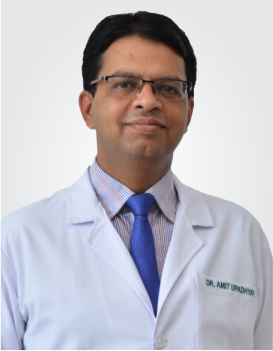Burkitt’s lymphoma requires a thorough and extensive approach to treatment. Prompt Burkitt lymphoma treatment is essential due to the cancer cells' rapid development and tendency for broad transmission. Burkitt lymphoma frequently responds very well to the intense chemotherapy regimens currently advised, and cure rates for this illness continue to be high.
Depending on whether a patient is at low or high risk, different Burkitt lymphoma treatment guidelines are available. Similar combinations of medications are used to treat diseases with low and high risk, while high-risk patients receive additional care. All of the therapies are rigorous and often involve administering high dosages of medication.
The patient will likely undergo one of the following treatment plans:
Chemotherapy: Burkitt lymphoma responds well to this treatment. The "R-CODOX-M/IVAC" regimen, which combines cyclophosphamide, vincristine, doxorubicin, methotrexate, and cytarabine, is the most widely used chemotherapy regimen.
Immunotherapy: Immunotherapy is an option for Burkitt lymphoma patients, especially those who have certain genetic abnormalities, like the MYC gene rearrangement.
Intrathecal Therapy: Burkitt lymphoma is capable of spreading to the central nervous system (CNS). Intrathecal chemotherapy is provided directly into the cerebrospinal fluid (CSF) in order to prevent or treat CNS involvement.
Radiation Therapy: Radiation therapy may be employed in some circumstances, especially when the disease only affects a small area or if chemotherapy has left some residual disease.
Stem Cell Transplantation: In some situations, doctors may recommend a stem cell transplantation when a patient doesn't react to other Burkitt Lymphoma treatments. Medical professionals may also suggest this course of therapy to patients whose Burkitt lymphoma reoccurs. In a bone marrow transplant, stem cells are taken from the newborn's umbilical blood, peripheral blood, or bone marrow to replace the damaged stem cells.
Cost of the Burkitt Lymphoma Treatment
The cost of Burkitt lymphoma treatment in India varies based on several factors including the type and stage of cancer, the treatment modality used, the patient’s age, patient comorbidities, doctor’s expertise, type and location of the hospital, insurance coverage, and much more.
To know the cost of Burkitt lymphoma treatment in India, one must consult their healthcare provider. However, the below-mentioned table also provides the cost for the various treatment modalities used for Burkitt lymphoma treatment.
Treatment Options | Cost Estimate Range |
Chemotherapy | ₹ 75,000 to ₹ 2,50,000 |
Immunotherapy | ₹ 80,000 to ₹ 2,25,000 |
Radiation Therapy | ₹ 60,000 to ₹ 2,00,000 |
Stem Cell Transplant | ₹ 15,00,000 to ₹ 27,00,000 |
Burkitt Lymphoma Survival Rate
With improvements in Burkitt lymphoma treatment methods throughout time, Burkitt lymphoma's survival rate has considerably improved. Individual results, however, can vary depending on a number of variables, including age, illness stage, general health, and how they react to treatment.
Burkitt lymphoma is renowned for its quick development and strong chemotherapeutic response. Success rates of up to 90% have been stated, especially among children and young people, with early diagnosis and vigorous treatment.
Burkitt Lymphoma Prognosis
Burkitt lymphoma typically has a favorable prognosis, especially in children and young adults. The disease responds quite well to aggressive chemotherapy treatments. Patients with limited disease (Stages I and II) typically have a better prognosis than those with advanced cancer (Stages III and IV) or central nervous system invasion.
Additional therapy options, including stem cell transplantation or innovative targeted medicines, can be examined for patients who might suffer disease relapse or who have refractory illnesses in an effort to improve the prognosis.
The prognosis for Burkitt’s lymphoma has generally improved dramatically in recent years as a result of improvements in therapeutic strategies. However, because they can change depending on the unique patient characteristics and other clinical circumstances, it is crucial to discuss the exact prognosis and treatment choices with the medical team.





























